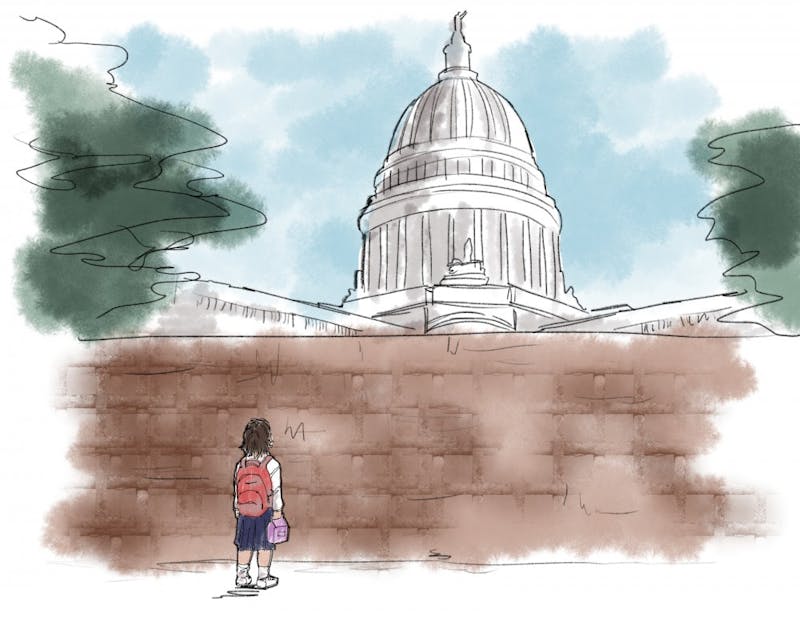
Women still struggle to overcome obstacles associated with running for office.
Image By: Max Homstad
Women still struggle to overcome obstacles associated with running for office.
Image By: Max HomstadSince the state’s inception in 1848, it is estimated more than 5,500 people have served in the legislature according to the Wisconsin Legislative Reference Bureau; more than 97 percent of those representatives have been male.
These figures illuminate a struggle for female representation on the state level that has a particularly unique story in Wisconsin.
2019 welcomed a majority of female assembly Democrats for the first time in the state’s history, according to WisContext. However, the percentage of overall female representation in the legislature has stayed steady at around 25 percent for the past 30 years.
Former Board President of the League of Women Voters of Wisconsin Melanie Ramey has seen this trend and the impact of having female representation in the state capitol.
“To get change, you have to get involved. Having good role models in office and in the community for young girls is very important," Ramey said.
Advocating for and empowering females to run for office is a necessary prerequisite for gaining the female perspective in the legislature according to Assemblymember Chris Taylor, D-Madison.
Taylor reflected on the moment she knew she should run for office in 2011 and the importance of having a female role model in a position of power.
“Senator Baldwin provided such a good example for me of the obligation I see I have now to bring women of all backgrounds along in the political process who are totally underrepresented in the legislature," Taylor said.
At the time, Taylor was raising a 6-month-old baby and was hesitant this would hold her back on the campaign trail and in office. Her perspective changed after her meeting with Baldwin, in which the senator asked her an important question.
“She asked me, ‘Why do you think our policies around early childhood issues are so horrible? It's because we don't have enough moms with kids at the table.’” Taylor said. “That was just what I needed to hear to make the final decision to run."
The plateau in female representation in the capitol can be explained in part by differences in party trends.
Since 2001, Republican female representation in the senate has fallen from 46.67 percent to 10.53 percent in the current legislature. Democratic representation has risen from 16.67 percent to 42.87 percent in the same amount of time. In the assembly, females hold a majority of seats for the Democratic party.
For Ramey, the issue is not partisan.
"It doesn't have to be a party issue. It has to be the visualization of women doing and accomplishing important things," Ramey said.
Taylor finds explanation for this in trends in conservative policies.
“We do not see parity in the Republican Party frankly because their policies are so hostile to women,” she said. “I don't see how their policy positions are appealing to women."
Taylor additionally raised concern about internal policies within the legislature that could serve as a barrier to entry for mothers and primary caregivers.
“During the week, my husband is working out of town for three to four days, so it's me as the parent here in town. We need to evolve these legislative schedules, so that they are more conducive for working parents," she said.
Taylor reflected on a time in December when, as a member of the Joint Finance Committee, she was surprised by a large bill to read over on Friday evening for a Monday afternoon session. She says the unpredictability of current scheduling is difficult for decision-makers trying to balance life between the capitol and home.
In the year of the woman, obstacles like the ones described by Taylor and Ramey still seem present in Wisconsin.
Ramey believes this should not stop those looking to make an impact on their community.
“There is no one who can be prevented from making change," she said.